#kinji fukusaku
Explore tagged Tumblr posts
Text










Black Lizard (1968), dir. Kinji Fukusaku
14 notes
·
View notes
Text
« Avez-vous déjà tué votre meilleur ami ? » (Battle Royale)
Note au lecteur : Avant d'entrer dans la présentation de ce film, je tenais à préciser qu'il a été à sa sortie interdit au moins de seize ans lors de sa sortie dans l'Hexagone, en effet Battle est un film d'horreur japonais, mais il ne s'agit pas d'un film d'horreur typique, car non ! Ce n'est pas de ce type de film où les pulsions interdites sont censurées. Non, ici les pulsions des personnages se développent à cause de leur égoïsme. Dans ce film, nous sommes confrontés à un monde cruel, révélant dans la noirceur des âmes.
dailymotion
« Japon, début du 21ᵉ siècle, le chômage et la délinquance explosent. Pour rétablir l'ordre, le gouvernement désigne au hasard une classe de trente lycéens chaque année et les soumet à une loi : Battle Royale. »
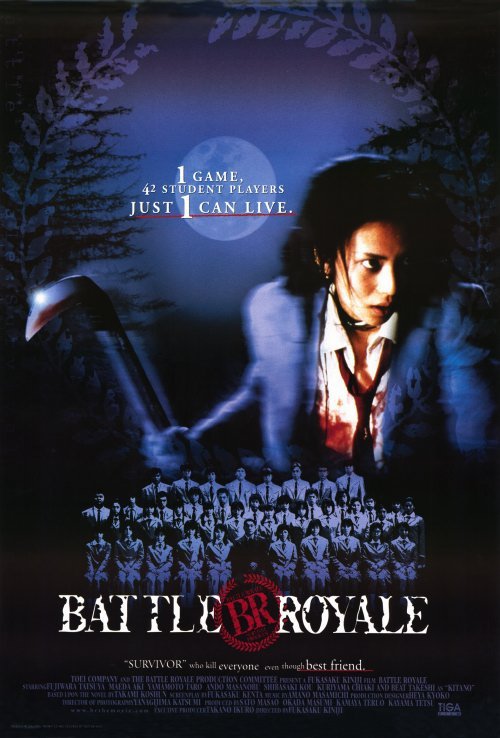
Battle Royale est donc un film sorti au début du nouveau millénaire, en 2000 pour être précise. Produit par Kinji Fukasaku (1930-2003) aux studios Toei Animation, il est issu du roman éponyme de Kōshun Takami paru en 1999. Ce film est avant d'être un film d'horreur, une dystopie — communément nommé un film d'anticipation — si cela est plus clair pour vous, mais aussi d'action. Ce film est à mes yeux un film d'horreur du cinéma japonais plutôt bon, même si certaines scènes sont grotesques.
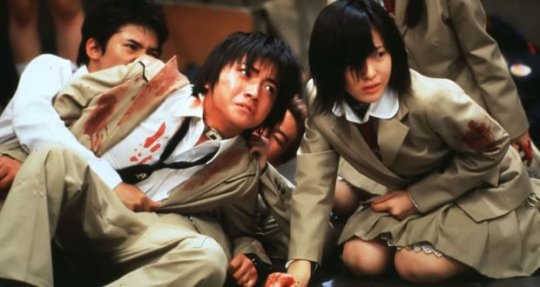
Venons-en désormais au scénario de film : dans un Japon ayant subi sans aucun doute une crise économique sans précédent entraînant une augmentation du chômage de 15% -soit un million de personnes sans emploi – accompagné d'une rébellion de quatre-vingt mille élèves qui ne se rendirent pas à l'école en raison de la perte de confiance en soi des adultes entraînant la peur des jeunes. Pour rétablir l'ordre chez les jeunes, le gouvernement vota la « loi B • R » — abréviation du terme Battle Royale – donnant son nom au « jeu » auquel les élèves sélectionnés une fois par an participeront. La classe est par ailleurs choisie parmi toutes les classes de Terminale du Japon — dans le film, il s'agit des élèves de la Terminale du lycée de Shiroiwa, il s'agit d'un lycée bien évidemment inventé —.
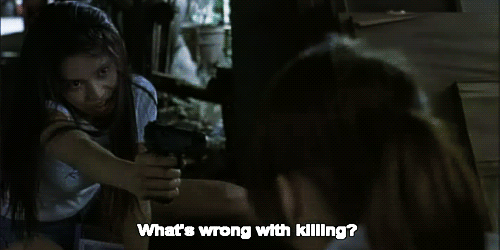
Jusque-là, rien ne semble encore trop étrange, mais passons maintenant aux règles énoncées dans les articles de la « loi B • R ».
Le but du jeu qu'est Battle Royale est de former une nation saine de corps et d'esprit et s'applique à toute la population sans aucune distinction.
Durant le temps de jeu étalé sur trois jours, les participants devront se battre dans la joie et la bonne humeur, s'amusant avec combattivité et appréciant leur chance immense de pouvoir participer à un tel jeu. Le refus de participation est interdit et toute tentative d'entraver le jeu sera puni.
Il est également à noter que les participants sont exempts de toute punition judiciaire et se voient donc autorisés à tuer, provoquer des incendies, se servir d'armes de toute nature — poisons et matières médicamenteuses comprises —.
La seule chose intéressante est que le gagnant aura sa vie future entièrement financée par l'État japonais et, sera considéré comme un citoyen modèle, exemple à suivre pour former la nation saine de corps et d'esprit.
Battle Royale est donc un survival où quarante-deux jeunes vont devoir s'entretuer dans la joie et la bonne humeur comme le dit la présentatrice des règles du jeu.
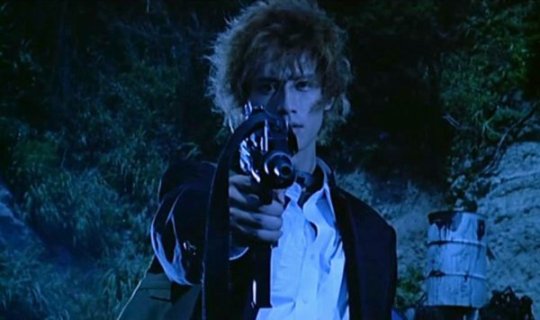
Dans les quarante-deux personnages, certains prennent plus d'importance que d'autres.
Prenons par exemple les deux personnages les plus âgés, Kawada Shōgo et Kiriyama Kazuo qui créent un manichéisme trop important dans le film.
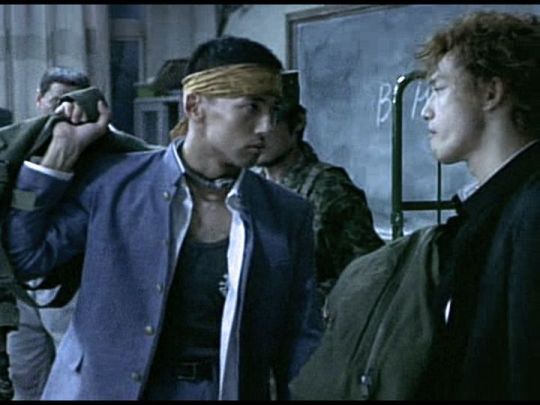
Kawada Shōgo, gagnant d'une édition précédente de Battle Royale et engagé volontaire, porte des vêtements assez clairs, à gauche sur l'image ci-dessus, est contre le jeu. Il est de ce fait le symbole du bien. Il se révèlera d'ailleurs être plutôt sympathique alors que Kiriyama Kazuo, à droite sur l'image, possède des habits noirs et a toute l'allure du méchant. Ce dernier est par ailleurs une vraie machine à tuer et s'est inscrit à Battle Royale pour le plaisir de tuer des gens.
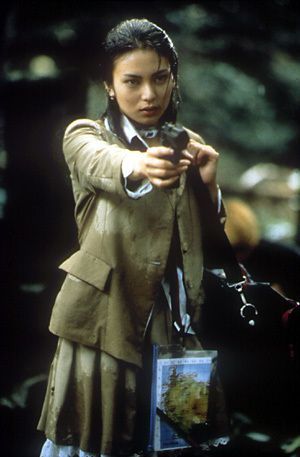
Nous avons par ailleurs le personnage de Souma Mitsuko qui se révèlera être la fille la plus sanguinaire, mais aussi l'une des plus machiavéliques de l'intrigue, prête à tout pour survivre au jeu.
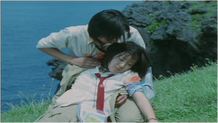
Viennent ensuite Nanahara Shūya et Nakagawa Noriko – image ci-dessus – deux amis qui resteront ensemble durant le film et seront rejoints par Kawada.
Pour conclure cet article, passons à la partie de la critique réalisée selon mon point de vue sur le film, donc des plus subjectives.
J'ai été, la première fois que j'ai visionné ce long métrage, agréablement surprise. J'avais en effet déjà regardé des films d'horreurs japonais et coréens du même genre et je les avais trouvés complètement tirés par les cheveux, ce qui est moins le cas pour Battle Royale : le film a un scénario qui tient la route.
Le film aborde comme thème principal le passage de l'adolescence à l'âge adulte et reste assez réaliste dans la société actuelle. Lorsque nous sommes enfants, nous sommes tous (à quelques exceptions près) amis pour la vie, puis lorsque nous grandissons, nous cherchons à devenir les meilleurs, élimant les plus faibles qui ne tiendront pas selon le système élitiste demandant toujours plus de sacrifices dans lequel nous nous trouvons. J'espère toutefois que personne ici n'a jamais tué un de ses amis pour rester supérieur à lui.
De plus, le thème du passage à l'âge adulte est également montré par la relation entre les adultes et les enfants. Les adultes cherchent à museler leurs enfants afin qu'ils pensent de la même manière qu'eux.
J'ai personnellement vécu cette situation, ayant été élevée par mes grands-parents, ma grand-mère en particulier qui, jusqu'à sa mort, trouva toujours quelque chose à me reprocher et ne fut jamais satisfaite de moi pour toute une liste de raisons que je n'énoncerai pas ici.
Passons maintenant au jeu d'acteur qui n'est pas mauvais, mais n'est pas parfait non plus, surtout dans les scènes de morts où tout est un petit peu surjoué — remercions tout particulièrement le côté épique demandé par le kabuki – et où il y a un peu too much de sang, certainement dû au petit budget du film.
Certains acteurs comme Tarō Yamamoto – acteur de Kawada – et Masanobu Andō – acteur de Kazuo Kiriyama – jouent particulièrement bien et ont des personnages intéressants, bien que très clichés, mais cela est malheureusement loin d'être le cas pour tous qui ont pour la plupart des personnages plats dont on ne sait pas grand-chose. Nous n'avons donc que quelques informations sur le personnage de Kawada, Kazuo et Nanahara Shūya mais cela ne leur donne malheureusement pas plus de profondeur.
Il est toutefois à noter que le film ne disposait que d'un petit budget et que par conséquence, il ne pouvait pas faire des miracles.
Attaquons-nous aux dialogues qui sont parfois étranges, cela en particulier dans la version française du film, entraînant des moments grotesques et grandiloquents, provoquant des fous-rire pour certains.
Pour conclure cette critique... Disons que le film peut être sympathique lorsqu'on le regarde quand nous sommes des adolescents, mais aujourd'hui, à vingt-cinq ans, j'ai beaucoup plus de mal à le trouver intéressant.
C'est donc un film pour les adolescents en rébellion. Je ne comprends par ailleurs pas sa classification comme film d'horreur et l'interdiction au moins de seize ans à sa sortie dans les salles.
2 notes
·
View notes
Text
(inspired by @goryhorroor's watchlist challenge)

My October horror movie watchlist!!🎃👻
day 1: silent horror movie: Häxan (1922 dir. Benjamin Christensen)
day 2: a 30s horror movie: Dracula's Daughter (1936 dir. Lambert Hillyer)
day 3: a 40s horror movie: Cat People (1942 dir. Jacques Tourneur)
day 4: a 50s horror movie: The Thing from Another World (1951 dir. Christian Nyby)
day 5: a 60s horror movie: Eyes Without a Face (1960 dir. Georges Franju)
day 6: a 70s horror movie: Martin (1977 dir. George A. Romero)
day 7: a 80s horror movie: The Lost Boys (1986 dir. Joel Schumacher)
day 8: a 90s horror movie: Event Horizon (1997 dir. Paul W. S. Anderson)
day 9: a 2000s horror movie: Battle Royale (2000 dir. Kinji Fukusaku)
day 10: a 2010s horror movie: It Follows (2014 dir. David Robert Mitchell)
day 11: a 2020s horror movie: Late Night with the Devil (2023 dir. Colin Cairnes, Cameron Cairnes)
day 12: pick a horror movie from your watchlist: Lake of Dracula (1971 dir. Michio Yamamoto)
day 13: pick a movie from my essential underrated horror: Let's Scare Jessica to Death (1971 dir. John Hancock)
day 14: pick a hammer productions horror movie: Dracula A.D 1972 (1972 dir. Alan Gibson)
day 15: pick a remake of a horror movie: Psycho (1998 dir. Gus Van Sant)
day 16: pick a horror movie released this year: Cuckoo (2024 dir. Tilman Singer)
day 17: pick a horror short film: La Sirena (2017 dir. Rosita Lama Muvdi)
day 18: pick a horror movie with a female villain: Misery (1990 dir. Rob Reiner)
day 19: pick a blumhouse horror movie: The Black Phone (2021 dir. Scott Derrickson)
day 20: pick a horror movie with a cult: Rosemary's Baby (1978 dir. Roman Polanski)
day 21: pick a giallo horror movie: Blood and Black Lace (1964 dir. Mario Bava)
day 22: pick an a-24 horror movie: Bodies Bodies Bodies (2022 dir. Halina Reijn)
day 23: pick an animated horror movie: The Wolf House (2018 dir. Cristóbal León, Joaquín Cociña)
day 24: pick an analog horror movie: Noroi: The Curse (2005 dir. Koji Shiraishi)
day 25: pick a criterion horror movie: Godzilla (1954 dir. Ishiro Honda)
day 26: pick a shudder horror movie: Host (2020 dir. Rob Savage)
day 27: pick a technicolor horror movie: The Birds (1963 dir. Alfred Hitchcock)
day 28: pick a slavic horror movie: Solaris (1972 dir. Andrei Tarkovsky)
day 29: pick a female directed horror movie: Ravenous (1999 dir. Antonia Bird)
day 30: pick a horror movie from directors’ faves: The Devil's Backbone (2001 dir. Guillermo del Toro)
day 31: freestyle; pick a horror movie of your choice: Trick 'r Treat (2007 dir. Michael Dougherty)

gonna try and squeeze a couple more in as well, but these are my main picks for my watchlist!! i tried to go for ones i havent seen yet, but there are a few familiar favourites in there too
#horror movies#october#halloween#watchlist#halloween watchlist#october watchlist#horror#october challenge#horror challenge
6 notes
·
View notes
Text
I just didn't want to be a loser anymore.
- from Battle Royale (dir. Kinji Fukusaku)
0 notes
Text
Reader
(Grammar correction powered by DeepL Write)
1. Hutchinson R. (2019) 'Fukasaku Kinji and Kojima Hideo Replay Hiroshima: Atomic Imagery and Cross-Media Memory', Japanese Studies, available on: https://doi.org/10.1080/10371397.2019.1614882 [Accessed on 19 Nov, 2023]
This essay analyses how nuclear issues related to atomic blasts in World War II are reflected in Japanese media culture by examining two examples: the movie Battles without Honor or Humanity (1973) directed by Fukasaku Kinji and the video game Metal Gear Solid (1998) directed by Hideo Kojima. The essay will apply principles of academic writing including objectivity, clarity, logical structure, conventional formatting, clear and objective language, adherence to style guides, formal register, logical progression, balance, precise word choice, and grammatical correctness.
Particularly in Metal Gear Solid (1998), the director Kojima constructed an alternative virtual backstory that closely resembled real-life events occurring before the atomic bombing of Hiroshima during World War II. Kojima incorporated multiple cutscenes that portrayed the effects of an atomic blast, following Fukusaku's film. This reinforced the gravity of the deadly and potentially irreversible trauma, whilst emphasising the significance of duty for the protagonist.
Nevertheless, individuals from diverse cultural and political backgrounds harbour their own perceptions. Japanese artists, particularly those from close generations, associate the effects of nuclear trauma with their historical development. The story told by their elders, perhaps the longest-lasting and deepest cut of all, instills terror among citizens. The memories of atomic blasts, and the long-lasting radiation and wide-ranging burns on their lands, leave scars that endure.
So, it is important to carefully consider the perspectives of audiences from different backgrounds. Achieving resonance with the audience is key, resulting in a truly balanced and outstanding piece of work. This is especially crucial in a global market where varied perspectives are prevalent.
2. Allison A. (2000) ‘A Challenge to Hollywood? Japanese Character Goods Hit the US’, Japanese Studies, available on: https://doi.org/10.1080/10371390050009075 [Accessed on 20 Nov, 2023]
This article provides examples of various Japanese intellectual properties (IPs), such as Pokemon, Power Rangers, and Tamagotchi, and describes how they became popular beyond Japan in Euro-American regions. This phenomenon demonstrates that even though citizens' tastes may differ, creative and fresh ideas or works can captivate most people's attention and significantly increase the IPs' influence.
Although it may seem simple to attract a potential audience's attention with fresh ideas, this article was published at the dawn of the 21st century, a time when fertile ground lay ready for new ideas to sprout like bamboo shoots. Now more than 20 years have passed and artists worldwide have replicated and adapted the original ideas to suit their own perspectives. Despite the passage of time, creativity may have become trapped in a cycle for years on end. It is not easy to disassemble the conventions, but this may prove the true norm. Long-standing ideas have become the foundation for modern pop culture, and have been emulated countless times, thus strengthening the bond between artist and audience, rather than engendering competition between intellectual properties.
3. Loudoun F. M., Boyle B., Larsson-Lund M. (2023) 'Making choices in digital play spaces: Children’s experiences', Scandinavian Journal of Occupational Therapy, available on: https://doi.org/10.1080/11038128.2023.2271050 [Accessed on 20 Nov, 2023]
This essay reports on an experiment designed to investigate the aspects of gameplay that are most appealing to children, whether in a manual or digital format. The results demonstrate that the most engaging factor is the opportunity for children to make their own decisions. The essay explains that this is because children are less interested in following rules or instructions and are more attracted to the curiosity that arises from the consequences of their choices.
I suppose this theory holds true in the realm of gaming experience for adults. A prime example of this is the Open-world category of video games - a very popular genre, where players relish the opportunity to explore and experience their chosen direction, selecting their options independently and making choices without having to worry about real-life consequences. A prime example of this is the Open-world category of video games - a very popular genre, where players relish the opportunity to explore and experience their chosen direction, selecting their options independently and making choices without having to worry about real-life consequences. The design process is such that players are rewarded with surprises at every turn. Another example to consider is the extensive customization options available to players in games with a high degree of freedom. It is not uncommon for players to spend a significant amount of time fine-tuning their virtual characters, properties and items.
What is particularly inspiring is the challenging nature of developing such games, which requires a considerable team effort. However, excessive additions to the game can negatively impact optimization, hence material reuse is crucial. As for how to alleviate monotony stemming from duplicating content and produce innovative material beyond the original fundamentals, that appears to be a distinct challenge for other creative businesses.
4. Valdés-Miyares J. R. (2021) 'Beowulf’s Monster Discourse Now: Grendel in Twenty-First-Century Film' , English Studies, Volume 102 Issue 6, Phase 7, available on: https://doi.org/10.1080/0013838X.2021.1952678 [Accessed on 23 Nov, 2023]
This section of the essay provides examples from the Alien Series to compare with the movie Beowulf, in order to explore the creation of iconic and impressive monsters from outer space.
Although I have not watched Beowulf, as a fan of the Alien Series, I can appreciate the concept of creating the Xenomorph from the shape of humanoids. In the story of the movies or the scenes behind, Ridley Scott, the creator and director, clarifies that the deadly monster Xenomorph has an endless connection with humankind. This is the reason why people feel deep horror from the monster. People believe that there is an unseen barrier between their human shape and the monster, and their flesh could always be the cradle breeding the monster's terrifying form. (And of course thanks to the artist H. R. Giger who created it.)
For us concept artists, it is never too late to rethink about creating impressive and horrible concept from the shape, or even texture of our common race, human.
5. Cynthia, K. (2015) 'The Future is Female: Bateson, Benjamin and How Women Learn in Ridley Scott's Prometheus' , Anthropology Now, Volume 7 Issue 3, available on: https://doi.org/10.1080/19428200.2015.1103608 [Accessed on 18 Dec, 2023]
The article discussed about inspiration of feminism from Prometheus (2012), directed by Ridley Scott, and even other films of Alien Series.
As a rare movie series which always set female characters as protagonist or even heroines, Alien Series never avoid showing feminine elements, and continue to make some of them neutral at the same time. From my personal perspective, it is a great example to show the film industries that starting the story from females would never reduce the potential of storytelling, while the points of view from women's eyes are needed to be shown as more as possible at the same time, the industries need to be balanced with multiple eyesights.
Talking about Prometheus itself, it was a great breaking point to set a heroine, and set a inhuman, which is an android male, at the same time. The evil, but extremely intelligent, unpredictable android David as the villain achieved a great comparison with the normal mortal heroine Dr. Shaw, just like how the gender status still remains in the real life. And it was really tricky how the movie ended, none of them was defeated, but both survived and black and blue.
Trying to read a story from a reference of real life inspires us creating concept which reflects the ideas almost everybody thinks about.
6. Mee, L. (2021) 'Conjuring a Universe: James Wan, Creepy Dolls and Demon Nuns', Quarterly Review of Film and Video, Volume 40, Issue 2, available on: https://doi.org/10.1080/10509208.2021.1996311 [Accessed on 02 Jan, 2024]
This article examines how the Conjuring-Verse created by director James Wan is developed across various films.
Despite being directed by different individuals, the main creative team pays close attention to the production of the story's background. This results in not only intriguing comparisons between the same characters appearing or mentioned in different films, but also the occurrence of different events in the same time and space, as well as similarities in the background setting. The article highlights how different stories are developed in various directions by the same cause.
Wan is a pioneer of the Conjuring-Verse and a model of low-budget horror film production. This genre of horror film does not require a luxurious cast or elaborate set design, which is indicative of its typically low budget. Despite these limitations, directors such as Wan are able to create compelling stories with satisfying conclusions. The Conjuring-Verse is a prime example of this.
7. Beale, S. (2022) ‘Funny and disturbing: women’s serio-comic performances on the Victorian music hall’, Comedy Studies, available on: https://doi.org/10.1080/2040610X.2022.2091734 [Accessed on 02 Jan, 2024]
This article introduces local serio-comic productions with female themes in Victorian England. It explains how female creators and actors struggled with public opinion and promoted feminist thought.
Britain was one of the areas where the feminist movement first developed, and it has a rich cultural and entertainment scene. Female creators indirectly reveal the situation of women in The Times through drama and comedy. Women are frequently subjected to unfair treatment and prejudice in such situations, which is often taken for granted. The serio-comic genre elicits laughter while also prompting the audience to reflect on the absurdity that arises from serious reality. The relaxed genre carries the weighty burden of civilization.
8. Harper, G. (2023) ‘Artificial Creative Intelligence (ACI)’, Creative Industries Journal, available on: https://doi.org/10.1080/17510694.2023.2273127 [Accessed on 02 Jan, 2024]
This paper briefly discusses the evolution and value of Artificial Creative Intelligence (ACI) by combining numerical studies and theories. It highlights that technological developments have intensified the general population's reliance on computer automation technology, particularly artificial intelligence. This dependence is often due to the need for convenience, but also partly due to people's lack of knowledge in certain areas. AI is often used by those who require creative results but lack the corresponding creative ability.
The question of whether AI can replace human creativity has become a popular topic. However, it is important to note that the origin of creation is still human, as AI typically uses a pre-existing database or material library. Nonetheless, the origin of creation is still the human itself, and new creation can provide a steady stream of creativity for the field of literature and art. As long as copyright issues are taken into consideration. Technical support, such as ACI, is often just one step in a complete creative workflow. It provides references or efficiently collects material, while protecting copyright.
9. Warren-Crow, H. (2016) 'Screaming like a girl: viral video and the work of reaction', Feminist Media Studies, available on: https://doi.org/10.1080/14680777.2016.1234234 [Accessed on 03 Jan, 2024]
This article analyses the reasons behind the popularity of reaction videos, particularly those featuring female protagonists. The text is accessible to a broad audience, including those with cognitive disabilities or low reading literacy. Reaction videos can include responses to images, as well as challenges such as the 'ice water challenge' and eating videos.
The article notes that women's images, expressions, voices, and body movements tend to have a greater impact on viewers' senses. The text is grammatically correct, uses simple vocabulary, and follows a logical structure. The sentences are short and straightforward, and the active voice is used where possible. No changes to the content have been made. The target audience is not limited to heterosexual cisgender men seeking sensory stimulation. It is important to consider that the image of women is generally more widely accepted, which can positively impact the click rate on the network.
The article discusses how certain female image elements are linked to human physiological conditioning, such as the association with maternal impressions and the response of the human brain to the characteristic high pitch of the female voice. Exploring the human body can aid the visual creation process. For instance, it can help identify the most pleasing colour combinations, or the most striking combinations of positive and negative shapes and lines.
10. Dixon, W. W. (2017) 'The Ghost of Frankenstein: The Monster in the Digital Age', Quarterly Review of Film and Video, available on: https://doi.org/10.1080/10509208.2017.1313030 [Accessed on 05 Jan, 2024]
The article briefly introduces the changes made to the Frankenstein films. It explains how the image of Frankenstein, which was originally unique in film culture, has been repeatedly reimagined by different directors and artists, and how its appeal has evolved over time.
According to my personal taste, the most fascinating aspect of a movie series, particularly a monster movie series, is the way the image and theme change with time. This is especially true for antique IPs that are over 50 years old. The charm of Frankenstein lies in its alternative interpretation of the concept of 'living dead'. Frankenstein always has a mad and tragic 'creator' behind it, and a tragic story. From another perspective, if the image of Frankenstein is given enough intelligence in the story, it can be linked to philosophical questions such as 'the meaning of existence'. Therefore, it can be argued that the Frankenstein series is also a precursor to the story of the 'android', such like Blade Runner, or I, Robot.
0 notes
Photo

Rest in power 千葉 真 22/01/1939 / 19/08/2021
282 notes
·
View notes
Photo
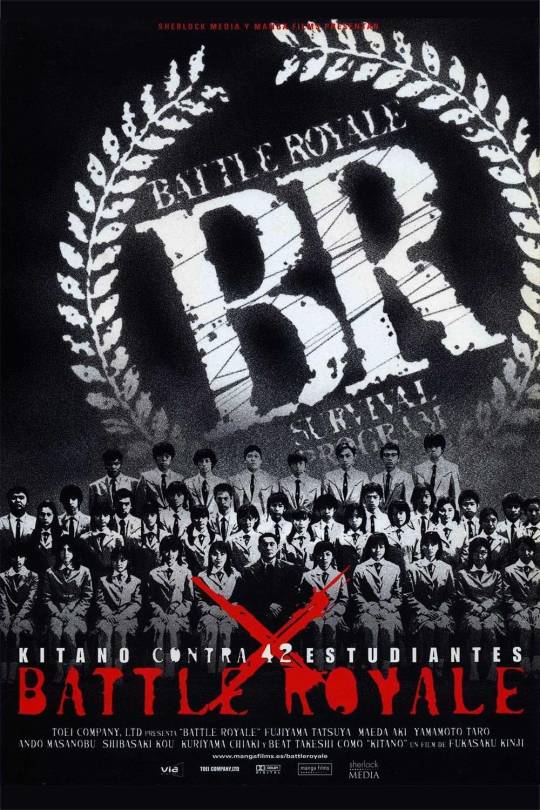
#fujiyama tatsuya#maeda aki#yamamoto taro#ando masanobu#battle royale#movie poster#movie posters#shibasaki kou#kuriyama chiaki#fukusaku kinji#movies#japan
21 notes
·
View notes
Photo

https://en.wikipedia.org/wiki/Dotonbori_River
0 notes
Text
Every Film I Watched in 2022
The Matrix (1999, dir. Lana Wachowski & Lilly Wachowski) Bidoof’s Big Stand (2022, dir. Shaofu Zhang) Samurai Cop (1991, for. Amir Shervan) The Matrix Resurrections (2021, dir. Lana Wachowski) Citizen Kane (1941, dir. Orson Welles) Tetsuo II: Body Hammer (“鉄男II BODY HAMMER” 1992, dir. Shinya Tsukamoto) The Elephant Man (1980, dir. David Lynch) Grandma’s Boy (2006, dir. Nicholaus Goossen) Always Be My Maybe (2019, dir. Nahnatchka Khan) Game Night (2018, dir. John Francis Daley & Jonathan Goldstein) When We First Met (2018, dir. Ari Sandel) The Kid (1921, dir. Charlie Chaplin, 1972 rerelease) Menace II Society (1993, dir. Albert Hughes & Allen Hughes) Duck Soup (1933, dir. Leo McCarey) 30 Minutes or Less (2011, dir. Ruben Fleischer) Chimes at Midnight (1965, dir. Orson Welles) Money Plane (2020, dir. Andrew Lawrence) Man with a Movie Camera (“Человек с киноаппаратом” 1929, dir. Dziga Vertov, Cinematic Orchestra soundtrack) Godzilla (1998, dir. Roland Emmerich) City Lights (1931, dir. Charlie Chaplin) Krull (1983, dir. Peter Yates) Klute (1971, dir. Alan J. Paluka) The Lawnmower Man (1992, dir. Brett Leonard) Area 51: The Alien Interview (1997, dir. Jeff Broadstreet) Ratty (2020, dir. John Angus Stewart) Heavy Metal (1981, dir. Gerald Potterton) The Northman (2022, dir. Robert Eggers) Autumn Sonata (“Höstsonaten” 1978, dir. Ingmar Bergman) Battles Without Honor and Humanity (“仁義なき戦い” 1973, dir. Kinji Fukasuka) Battles Without Honor and Humanity: Deadly Fight in Hiroshima (“仁義なき戦い 広島死闘篇” 1973, dir. Kinji Fukasuka) Battles Without Honor and Humanity: Proxy War (“仁義なき戦い 代理戦争” 1973, dir. Kinji Fukusaku) Battles Without Honor and Humanity: Police Tactics (“仁義なき戦い 頂上作戦” 1974, dir. Kinji Fukusaku) Battles Without Honor and Humanity: Final Episode (“仁義なき戦い 完結篇” 1974, dir. Kinji Fukusaku) Logan’s Run (1976, dir. Michael Anderson) The Vietnam War (2017, dir. Ken Burns & Lynn Novick) The Devil Wears Prada (2006, dir. David Frankel) Best in Show (2000, dir. Christopher Guest) Shaolin and Wu Tang (“少林與武當” 1983, dir. Gordon Liu, dub) Shin Godzilla (“シン・ゴジラ” 2016, dir. Hideaki Anno & Shinji Higuchi) The Legend of the Suram Fortress (“ამბავი სურამის ციხისა” 1985, dir. Sergei Parajanov) The Six Directions of Boxing (“六合八法” 1980, dir. Hsu Tien-Yung, dub) Shaolin vs Lama (“少林鬥喇嘛” 1983, dir. Lee Tso-Nam, dub) Inside the Mind of a Cat (2022, dir. Andy Mitchell) Prey (2022, dir. Dan Trachtenberg) Marathon Man (1976, dir. John Schlesinger) Final Destination (2000, dir. James Wong) Final Destination 2 (2003, dir. David R. Ellis) Final Destination 3 (2005, dir. James Wong) The Final Destination (2009, dir. David R. Ellis) Final Destination 5 (2011, dir. Steven Quayle) Mulan (1998, dir. Tony Bancroft & Barry Cook) No Time to Die (2021, dir. Cory Joji Fukunaga) The Munsters (2022, dir. Rob Zombie) House of 1000 Corpses (2003, dir. Rob Zombie) One Night in Miami… (2020, dir. Regina King) Magnificent Obsession (1954, dir. Douglas Sirk) The Knight Before Christmas (2019, dir. Monika Mitchell) Halloween (1978, dir. John Carpenter) Noel Next Door (2022, dir. Max McGuire) Ice Sculpture Christmas (2015, dir. David Mackay) Alexander Nevsky (1938, dir. Sergei Eisenstein) Love Hard (2021, dir. Hernán Jiménez) Falling for Christmas (2022, dir. Janeen Damien) A Christmas Prince (2017, dir. Alex Zamm) Holidate (2020, dir. John Whitesell) Cyborg (1989, dir. Albert Pyun) Full Metal Jacket (1987, dir. Stanley Kubrick) Star Trek Generations (1994, dir. David Carson) Christmas Vacation (1989, dir. Jeremiah S. Chechik) Star Trek: First Contact (1996, dir. Jonathan Frakes) Bridget Jones’s Diary (2001, dir. Sharon Maguire) Teenage Mutant Ninja Turtles (1990, dir. Steve Barron) Waterworld (1995, dir. Kevin Reynolds) Elf (2003, dir. Jon Favreau) Feliz NaviDAD (2020, dir. Melissa Joan Hart) Emmet Otter's Jug-Band Christmas (1977, dir. Jim Henson)
7 notes
·
View notes
Text
Rules: Tag nine people you want to know better.
Thank youuuu bestieeee @lyndeth-halfelven 💕
Three ships: Gimli x Legolas, Beleg x Turin, Earendil x Elwing
First ever ship: Every time I get asked this it’s so embarrassing for me because I have to answer Jacob Black x Bella Swan. But I answer honestly every time because I’m god’s strongest soldier.
Last song: Only You by miss A. I’m not as free from my Kpop chains as I like to think I am 😔
Last film: Honestly I have NO clue, I never watch films or if I do its the same ones over and over again 😭 Ask me to name a film other than The Handmaiden (2016) dir. Park Chan Wook or Battle Royale (2000) dir. Kinji Fukusaku and I honestly couldn’t do it
Currently reading: The Burning God by RF Kuang and I’m ... scared. I’ve grown attached to these poor little meow meow war criminals and I want them to be ok😔
Currently watching: Bridgerton s2. Love you Kate but Anthony...I’m not sure about you yet.
Currently consuming: Coke Zero
Currently craving: A cig lmao but I’ve quit so sucks to be me.
No pressure tagging: @quarantinedwanderer @matrose @spiced-wine-fic @imakemywings @purpleprosaist @avantegarda @eerieechos
5 notes
·
View notes
Text
The film Battle Royale was directed by Fukusaku Kinji, a man who had seen the horrors of war first hand... literally having to clear up friends body parts after bombings in WWII. Movies tend to glorify violence, even senseless violence as somehow justified... the deaths in Battle Royale may have been overacted at times, but none of them felt... glorified... even when certain characters died it still felt... empty... and pointless... much like the “contest” the kids are forced to take part in... Just where my mind went when reading this...
"depiction is not automatically glorification" can and should coexist with "some depiction is glorification and you need to be able to tell the difference"
108K notes
·
View notes
Link
0 notes
Text
Review: Doberman Cop (Arrow Video)
Masked Avenger reviews Arrow Video's Blu-Ray release of Doberman Cop. Click here to see what the Ninja thinks of this Sonny Chiba Film
Doberman Cop
Starring: Sonny Chiba Directed: Kinji Fukusaku Studio: Arrow Video Format: Blu-Ray Disc Release Date: July 4, 2017
About:
Released just as the popularity of yakuza movies was waning in Japan, and as the country’s film industry was undergoing some fundamental shifts, Doberman Cop is a unique entry in the career of director Kinji Fukasaku (Battles Without Honor and Humanity, Cops vs…
View On WordPress
0 notes
Text
Discotek Announces Planet With, Virtua Fighter and More Upcoming Releases

Discotek Media announced a whole new slate of new licenses and upcoming releases at their Anime Boston panel on Saturday, including Blu-ray releases of Planet With, Aho Girl and more.
Announcements made during the panel are in alphabetical order.
Aho Girl: Subtitle-only Blu-ray release scheduled for August 2022.
Aho Girl is coming to Blu-ray! The daily everyday life gag comedy of a girl who isn't that smart & her friends! Clean OPs & EDs (quite a few of those) plus promos! Only 1500 copies! pic.twitter.com/YezwXTmyW7
— ????Discotek Media (@discotekmedia) May 28, 2022

Flying Phantom Ship: Released for the first time on Blu-ray, will include original Japanese with subtitles track and brand new English dub from Kocha Sound. Expected to release late 2022.
The Flying Phantom Ship is coming to Blu-ray for the 1st time... anywhere! The film is subbed, plus has the brand new dub you just got a preview of! Extras to be announced! Coming later this year! pic.twitter.com/yTJmzxlM1E
— ????Discotek Media (@discotekmedia) May 28, 2022
Lupin the 3rd: Dead or Alive: Blu-ray release with subtitle and Funimation dub tracks. Bonus features to include an interview with Monkey Punch, trailers, art gallery and credits. Expected to release later in 2022.
Lupin the Third- Dead or Alive is coming to Blu-ray! The theatrical film that was directed by Lupin creator Monkey Punch! Subbed, plus the classic Funimation dub. This one has a Monkey Punch interview, gallery, trailers, & more! pic.twitter.com/xNiu6ifZdX
— ????Discotek Media (@discotekmedia) May 28, 2022
Planet WIth: Subtitle-only Blu-ray release with special features including an alternate finale episode with different music cues. Scheduled to release in August 2022.
Planet With is coming to Blu-ray! High-speed & action-packed battling with a mecha cat! Good extras for this one, including an alternate music version of the final episode! Some of the most dynamic audio we've ever heard on a disc! pic.twitter.com/zfg5yidncb
— ????Discotek Media (@discotekmedia) May 28, 2022

Shogun's Samurai (live-action): Subtitle-only Blu-ray release of Kinji Fukusaku's film starring Sonny Chiba. Scheduled to release in Fall 2022 under the new Nihon Nights label.
Shogun's Samurai! With the new translation the movie should be more enjoyable to watch than ever before. Really nice packaging design for this one. pic.twitter.com/d08aSNMVQg
— ????Discotek Media (@discotekmedia) May 28, 2022

Symphogear AXZ: Subtitle-only Blu-ray release scheduled to release in Fall 2022.
Symphogear AXZ is coming this fall to Blu-ray! The disc is stuffed full with extras once again! The entire BD production team for the 1st 3 BDs came back for AXZ, so some good consistency. We broke various BD subtitle format limits quite a few times putting this one together. pic.twitter.com/rDrFVH6dr0
— ????Discotek Media (@discotekmedia) May 28, 2022
Virtua Fighter: SD-BD release with subtitle and original Anime Works dub tracks (first 24 episodes) with other special features still to be announced. Expected to release later in 2022.
Virtua Fighter is coming to SD-BD! All 35 episodes subbed, plus the vintage dub that exists for the first 24 episodes is also here! Extras will be announced later. pic.twitter.com/rEp76c49uV
— ????Discotek Media (@discotekmedia) May 28, 2022
The panel additionally gave updates for the upcoming releases of Beezlebub, Fatal Fury the motion picture, Lupin the 3rd vs Detective Conan TV Special and more in the Twitter announcement thread.

Kyle Cardine is a Managing Editor for Crunchyroll. You can find his Twitter here.
By: Kyle Cardine
0 notes
Note
Battle Royale
Seriously love it. Love that Kinji Fukusaku made it. His style was ahead of everybody else in the 70s, and still was in 2000. I can’t think of any other director that has gone out like a champ like that.
15 notes
·
View notes

